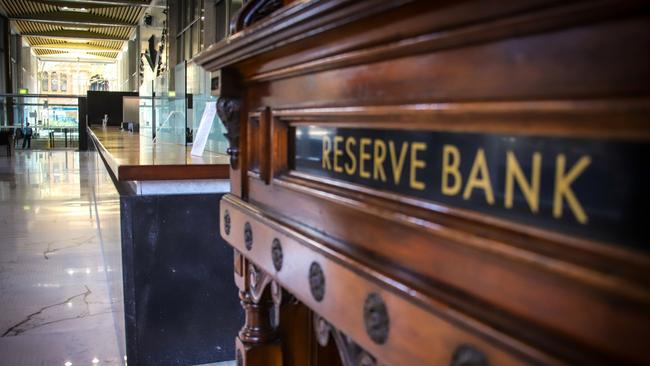RBA ‘flying blind’ on the impact of interest rate hikes
Hawkish rhetoric from the US may feed into the Reserve Bank board’s thinking for monetary policy in Australia, but the RBA doesn’t need to tighten as much as the Fed.

Business
Don't miss out on the headlines from Business. Followed categories will be added to My News.
A recent hawkish speech by US Fed chair Jerome Powell may feed into the Reserve Bank board’s thinking on the outlook for monetary policy in Australia, but the RBA doesn’t need to tighten as much as the Fed, according the head of Australian economics at the Commonwealth Bank.
Gareth Aird expects the RBA to lift the cash rate by 50 basis points to 2.35 per cent at its monthly board meeting next Tuesday, before announcing a final hike of 25 or possibly 50 points in October.
Anything more than that would likely generate a recession, he warns.
The rapid pace at which the RBA has tightened policy to 1.85 per cent from 0.1 per cent since May means there’s a degree to which the board is now “flying blind” in terms of the economic impact.
It’s too early for tier 1 economic data – including unemployment, inflation, wages and GDP – to show the impact of the rate hikes already delivered. But tier 2 data suggest the economy could slow “quite materially”, particularly given that monetary policy is expected to be tightened further.
“We think that provided the RBA pauses for at least a few months in their tightening cycle when the cash rate is 2.60 per cent or 2.85 per cent, the data will indicate that there is no need to continue to take the policy rate higher,” Aird says.
“Indeed, taking the cash rate higher would likely generate a hard landing in the economy.”

It comes amid news that Australian house prices fell 1.6 per cent month-on-month in August, the biggest fall since 1983, and July home loans fell 8.5 per cent month-on-month, one of the largest falls on record.
But while June quarter capital expenditure fell 0.3 per cent, plant and equipment rose a solid 2.1 per cent. And capex intentions for fiscal 2023 imply a massive 18 per cent rise, which, if realised, would be the strongest growth since the mining boom early last decade, according to UBS.
Aird points to the large proportion of fixed rate home loans that will expire over the next 18 months, creating “natural tightening even with the RBA on hold”.
The average loan rate for a mortgage borrower rolling off from a fixed rate over the next 18 months is around 2.25 per cent, well below the standard variable rate, which is likely to rise to about 4.5 to 5 per cent with a cash rate of 2.60 per cent.
While noting that the Fed chair’s surprisingly direct and hawkish speech to central bankers at the Economic Policy Symposium in Jackson Hole, Wyoming, last Friday may influence the RBA board’s thinking, Aird says Australia is “not in the same place as the US economy”.
“On the one hand, the board may feel that the Fed will do some of the heavy lifting on the inflation front by putting downward pressure on US demand and in turn aggregate global demand and tradables inflation,” he says.
“But on the other hand, Powell’s rhetoric may mean the board feels a greater sense of urgency to bring down inflation. This would raise the risk that the RBA continues for a little longer with aggressive 50 basis point rate hikes … (but) we do not believe the RBA needs to go down this path.
“The Australian economy is not in the same place as the US economy presently.”
Australia doesn’t have a “wage-price spiral” and both inflation and wages growth are running at materially lower levels than in the US.
Australia’s household sector is much more leveraged than the US and there’s a more direct and potent transmission mechanism from the policy rate to home borrowers given the structure of the local mortgage market.
And the RBA has a higher inflation target of 2-3 per cent versus 2 per cent for the Fed.
“Cross-currents” in domestic economic data suggest the RBA has a tough task ahead as it seeks to normalise monetary conditions in a way that “keeps the economy on an even keel”.
CBA’s credit and debit card data suggest nominal spending across the economy flatlined in August, suggesting the volume of spending contracted, and Aird expects consumption to weaken further as the lagged impact of rate hikes impacts aggregate demand.
More Coverage
Originally published as RBA ‘flying blind’ on the impact of interest rate hikes





